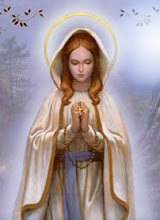Dedication of monuments
On Thursday the restored centennial monument and a new "Bicentennial" monument will be dedicated near the corner of Inland Center Drive and I Street at 10 a.m.
Bishop Gerald Barnes of the Diocese of San Bernardino, Chairman Rabbi Hillel Cohn of the Bicentennial Committee and San Bernardino Mayor Pat Morris will be among the dignitaries taking part in the ceremony.
Festivities also will include a presentation by Pauline Murillo, an elder of the San Manuel Band of Mission Indians. The ceremony is free and open to the public and there will be a reception immediately following at the California Welcome Center, 1955 Hunts Lane, Suite 102.
A Monumental Observance of City History
By
Nicholas R. Cataldo, Correspondent
San Bernardino's colorful history began thousands of years before the first "white man" arrived on the scene. The first "San Bernardinians" were the Yuhaviatam, or as the Spanish called them, Serrano (meaning Highlander).
But it wasn't until the early part of the 19th century that this area was given its name.
According to a Roman Catholic priest named Father Juan Caballeria, who in 1902 published "History of the San Bernardino Valley from Pioneers to the Padres, 1810-1851" it was Father Francisco Dumetz who named "San Bernardino."
A native of Majorca, Spain, Dumetz traveled to Mexico in May 1770 with 48 other Franciscans. From there he was sent to California where he was instrumental in developing missions in San Diego, San Carlos, San Buenaventura, San Fernando and San Gabriel.
In his book, Caballeria asserted that as Mission San Gabriel spread its landholdings eastward, a supply station was needed. The author wrote:
"A party of missionaries, soldiers, and Indian neophytes of San Gabriel Mission, under the leadership of Padre Dumetz, was sent out to select a location. On the 20th day of May 1810, they came into the San Bernardino Valley. This, according to the Roman calendar of Saints, was the Feast Day of San Bernardino (1380-1444) of Siena (Italy), and they named the valley in his honor."
Caballeria credited Dumetz with locating the supply station, with a chapel and warehouse, on what was later to be called Bunker Hill near the present-day locations of San Bernardino Valley College and Inland Center Drive.
On May 20, 1910 - exactly 100 years later - San Bernardino Valley's "Centennial" was celebrated. And on the very site where Caballeria claimed that Dumetz arrived a century earlier, Father Thomas J. Conaty, Bishop of the Los Angeles-Monterey Diocese, formally dedicated the location as the site for a proposed reconstruction of "Mission San Bernardino de Sienna."
Colton resident and merchant, O.L. Emory, who owned 11 acres encompassing the area, had deeded one-half acre to the Capilla (Chapel) Committee for building this structure. The committee trustees were Mrs. F.B. Daley, Mrs. E.D. Roberts, Mrs. F. Wilkerson and Mrs. Josephine Ferguson.
The San Bernardino Sun reported on May 15, a few days prior to the dedication:
"Everyone is delighted with the site for the Capilla, as it is recognized by the pioneers and other old residents that the site is very close to the site of the original Capilla not more than a few hundred feet from the exact spot.
"The cornerstone for the restored Capilla (Chapel) will be done by the Stone Brothers and in it will be placed newspapers of the period and many historical relics that will be of interest to future generations should the stone be opened.
"Later plans will be taken up for the erection of the Capilla, which will be made into a permanent museum of relics and curios pertaining to the history of the entire valley."
A group of residents from San Bernardino and Colton had a polished granite stone engraved with a tilting Latin cross and the message, "D.O.M. MISSION SAN BERNARDINO DE SIENNA, FOUNDED MAY 20, 1810, RESTORED MAY 20, 1910," to serve as a cornerstone for the structure.
As it turned out, the project ran short of funds and the capilla never was built, but the monument remained on the site for a number of years and then was kept in storage for a while. In 1976, the San Bernardino Parlor of the Native Sons of the Golden West recovered the cornerstone and placed it on a curb in front of St. Prophet Elias Greek Orthodox Church, where it remained until 2007, when members of the San Bernardino Historical and Pioneer Society moved it to the society's meeting hall at eighth and D streets in San Bernardino.

